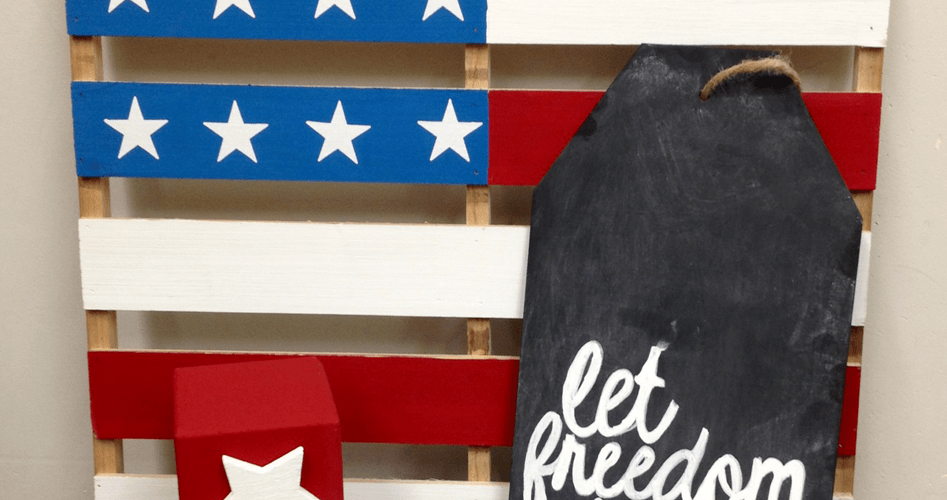Several flag retailers have recently reported increased sales due to an increase of patriotic home improvements. Apparently, there’s nothing like strife to bring out feelings of patriotism in Americans. The citizens of the United States have definitely been undergoing lots of strife lately.
One of the major home improvements involved in this patriotic trend is the installation of flagpoles. In most cases, it’s simply a matter of installing mounting brackets or placing 10% of the flagpole into a sleeve you’ve placed into a hole in the ground and cementing the sleeve into place. After the brackets or sleeve is in place, you simply hoist the flag.
You may want to make some patriotic home improvements for your 4th of July celebration. If you’re going to install a flagpole, you’ll need to consider the cost, desired appearance, size/dimensions, necessary flagpole strength, and what installation materials will be needed. The most common types of residential flagpoles are wall-mounted, classical in-ground, and telescopic. The taller and the bigger the pole and flag are, then the higher the price becomes. Moreover, accessorizing the flagpole with plants or ornaments will increase the price.
Also, you should be aware of the proper way to display your flag. Just as there are proper etiquette protocols for social behavior and internet usage, so there are proper flag protocols as well. There are also numerous federal, state, and city ordinances and regulations that give guidance on how to show respect for the American flag and its representations.
Basically, the flag code states:
- 1. The flag should only be displayed from sunrise to sunset when on buildings and on stationary flagpoles in the open, unless the flag is properly illuminated.
- The flag is supposed to be briskly raised and ceremoniously lowered.
- Unless the flag is weatherproof, it shouldn’t be flown in inclement weather.
- It’s improper to place any other flag of pennant above or on the right of the U.S. flag, if flown at the same level as the American flag. The only exceptions to this rule are for Navy chaplains when they’re conducting church services, and the flag display at the United Nations headquarters. International protocol calls for all national flags to be flown at the same height, with the same size flag during peace time, and the United Nations flag is given the place of honor at the U.N. headquarters. When there’s a group of flags, the U.S. flag should be raised first, and be the last one to be lowered.
- If you’re displaying the U.S. flag with another flag against a wall, using crossed staffs, then the U.S. flag should be on the viewer’s left (the flag’s right), and its staff should be in front of the other flag’s staff.
- The U.S. flag should be displayed at the center and highest point of any group of non-national flags, such as state, local, or societal pennants and flags, if they’re on staffs.
- The flag should be hung from a staff projecting horizontally or at an angle from the window sill, balcony, or front of a building, with the union (blue field with stars) being places at the top of the staff. When the flag is hung over a sidewalk from a rope stretching from the house to a pole, the flag should be hoisted out from the building, with the union first.
- The flag should never be flown at half-staff unless it’s been officially proclaimed by the President of the United States or the state governor as a day of mourning. When flying a flag at half-staff, hoist it to the top first, and then lower it half way. Before retiring the half-masted flag for the night, raise it to the peak and then lower it.
- Never display the U.S. flag with the union down, unless using it as a dire distress signal in cases of extreme danger to life or property.
- Never let the flag touch anything below it, such as the ground or floor.
- Never display, fasten, use, or store the flag is any manner which allows it to be easily soiled, torn, or damaged, and never use the flag for advertising purposes in any manner. Never place or attach any mark, picture, design, words, or anything else to the U.S. flag.
- Never use the flag as a ceiling cover, or as a receptacle for receiving, holding, carrying, or delivering anything.
- Never display a soiled, tattered, or otherwise badly damaged flag. Properly dispose of the old flag by burning it, and replace it with a new flag.
- When hanging a flag on the wall or window, always place the union where it’s to the left of the viewer. For the window, this means the viewer who is standing outside the building, looking in.
References:
Do It Yourself: 9 Different Flagpole Types
Home Fixated: Flagpoles Pros & Cons
Popular Mechanics: How To Setup a Flagpole
This Old House: How to Install a Flagpole
United States Flag Store: Flagpole Evolution
USA Today: Dynamic US Flag 200 Years of Change
U.S. History: Flag Code
<>
<>
Related Posts
- How Much Does It Cost To Maintain A Swimming Pool?
- How to Trap Squirrels?
- How to Grow Grapes?
- How to Aerate a Lawn?




